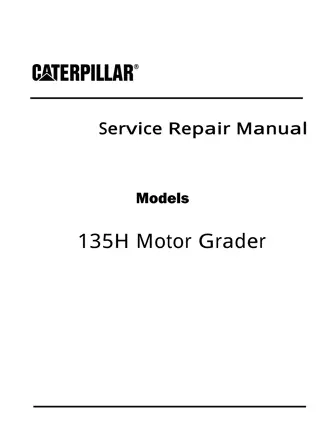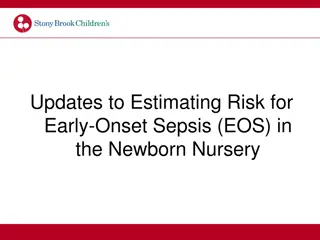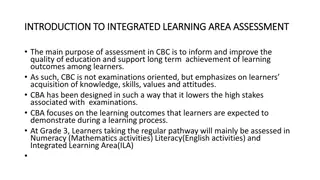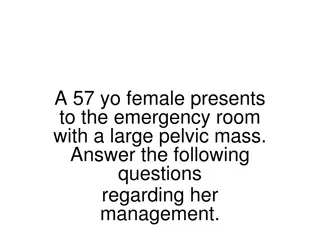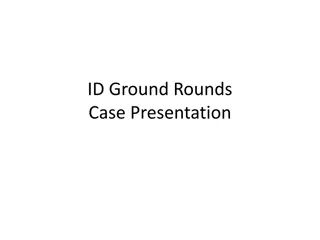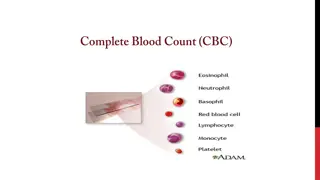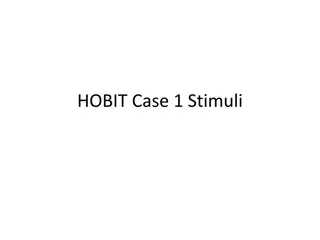Complete Blood Count (CBC) Testing
Complete Blood Count (CBC) is a crucial test that provides information about the composition of a patient's blood, including red blood cells, white blood cells, and platelets. This test helps in diagnosing conditions such as anemia, infections, and more. CBC involves analyzing parameters like RBC count, WBC count, platelet count, and red blood cell indices. The test can be conducted manually using a hemocytometer or automatically with the help of an analyzer. Through CBC, healthcare professionals can assess the overall health and detect various blood disorders.
Download Presentation

Please find below an Image/Link to download the presentation.
The content on the website is provided AS IS for your information and personal use only. It may not be sold, licensed, or shared on other websites without obtaining consent from the author.If you encounter any issues during the download, it is possible that the publisher has removed the file from their server.
You are allowed to download the files provided on this website for personal or commercial use, subject to the condition that they are used lawfully. All files are the property of their respective owners.
The content on the website is provided AS IS for your information and personal use only. It may not be sold, licensed, or shared on other websites without obtaining consent from the author.
E N D
Presentation Transcript
Objectives: 1. To estimate the number of RBC in blood sample 2. To estimate the number of total WBC in blood sample 3. To perform a differential count for a blood sample
Introduction Complete blood count (CBC) is a test that gives information about the cells in a patient's blood.(red blood cells, white blood cells, and platelets. A CBC test usually includes: WBC count. WBC differential count. Platelet count RBC count. Mean platelet volume (MPV) HCT Hb Red blood cell indices: There are three red blood cell indices: mean corpuscular volume (MCV), mean corpuscular hemoglobin (MCH), and mean corpuscular hemoglobin concentration (MCHC). Reticulocyte Count.
CBC can applied by two way: 1. Automated blood count 2. Manual blood count Automated blood count: CBC is performed by an automated analyzer that counts the numbers and types of different cells within the blood. It aspirates a very small amount of the sample through the narrow tubing. Within this tubing, there are sensors that count the number of cells going through it, and can identify the type of cell; this is called flow-cytometry.
Manual blood count This measurement is made with a microscope and a specially ruled chamber (hemocytometer) using diluted blood.
Red blood count: (A) It is test done to determination the number of RBC in a sample of blood , also it evaluate the size and shape of RBC It is range from 4.2 5.5 million RBC per cubic millimeter (mm ) It is considered a very important indicator of a patent s health Low RBC count High RBC count Anemia Polycythemia Acute or chronic blood loss Congenital heart disease, causing low blood Malnutrition oxygen levels Chronic inflammation Renal problem
Normally high (RBC count) People who live at high altitudes Oxygen is low RBC synthesis increases Smokers Principle : The process involves by counting cells in several squares of the grid and obtain an average number, this number is multiply by a factor that compensates the amount of dilution. The final results expresses the number of RBC /mm of original blood sample.
WBC count : Total leukocytes count shows the number of WBC in a sample of blood . A normal WBC count is between 4,500 and 11,000 cells per cubic millimeter . The number of WBC is sometimes used to identify an infection or to monitor the body s response to treatment. (B) Low WBC count A Condition in which the number of leukocytes is abnormally low and which is Leukopenia most commonly due HIV and radiation poisoning. High WBC count A condition characterized by an elevated the number of WBC occur as a result Leukocytosis of an infection, or cancer (Leukemia). It can occur normally after eating fat-rich meals .
Principle: It is necessary to obtain RBC free preparation of WBC from blood . Suspension of the red blood cell in a very hypotonic solution will lead to the destruction of RBC .
Calculations: RBC blood cell count ( 5 squares): Find the sum of RBCs in 5 large squares, and divide it with 80 (5 X 16) small squares to find the average in one square, multiply it by 200 to allow for the dilution and then multiply by 4000 to obtain the number per cubic milliliter. The sum of RBCs in 5 large squares = 84+71+63+93+83= 394 cells. The average of RBCs in one square= 394/80 = 4.9 cells. RBC count= 4.9 x 200 x 4000 = 4 million/mm3. Normal range= 4.2-5 million/mm3
WBC blood cell count ( 4 squares) Find the sum of WBCs in 4 large squares, and divide it with 64 (4 X 16) small squares to find the average in one square, multiply it by 20 to allow for the dilution and then multiply by 160 to obtain the number per cubic milliliter. The sum of WBCs in 4 large squares = 16+21+17+15= 69 cells. The average of WBCs in one square= 69/64 = 1.07 cells. WBC count= 1 x 20 x 160 = 3200 Cells/mm3. Normal range= 4500-11000 cells /mm3
(C) Differential Count It determines the number of each type of WBC present in the blood
Principle: Classification of polymorphonuclear granulocytes (PMN) is based on the size , shape , number and staining characteristics of their granules . Leishman s stain It is based on a mixture of methylene blue and eosin. It differentiates between WBC as indicated in the following table:
Platelets. These play a role in clotting. This test measures the number of platelets in your blood. The normal range is 150,000 to 450,000 platelets/mcL. Platelet count Mean platelet volume (MPV)

 undefined
undefined



